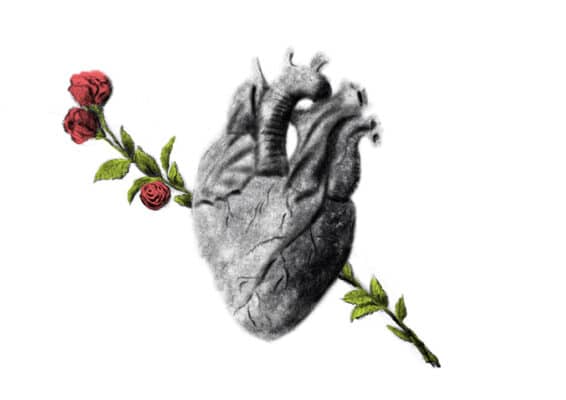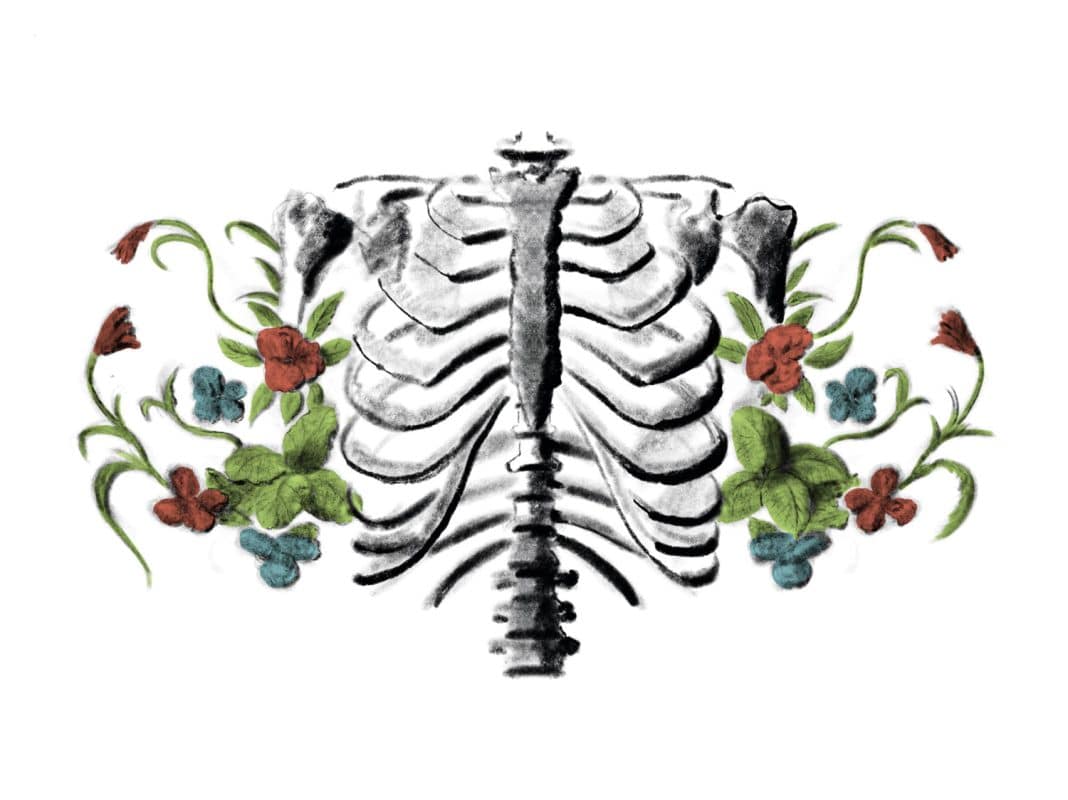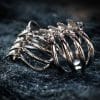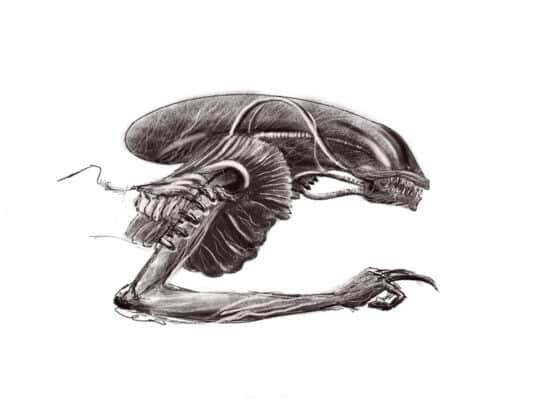
The heart: an eternal symbol from ancient history
The heart: an eternal symbol from ancient history 22/08/24 SUMMARY The heart is an element with countless nuances, meanings that have evolved over the centuries
BLACK FRIDAY – Only for Newsletter subscribers
Would you like to receive your order by CHRISTMAS? Make your purchase by December 1st.
Would you like to receive your order by ❤️ VALENTINE’S DAY? Make your purchase by January 25th.
CHRISTMAS CLOSURE – New orders will be processed from 8 January 2025
SUMMER CLOSURE 2024 – New orders will be processed from 19 August 2024 – 10% on the entire Shop

Goddess Ninhusrag asked, “My brother, which part hurts you?” and he replied, “My ribs hurt.” Thus she gave birth to Ninti, goddess of life.
Few symbols are as fascinating and forgotten as ribs. Present in the oldest myths of Sumerian and Hebrew culture, ribs evoke noble and profound images related to life, death, and genesis.
Unlike the other parts of the skeleton, such as the shinbones and skull, the ribcage does not directly evoke the corpse, but the creation, with the image of God molding Eve from Adam’s side. At the same time, the hip is one of the most interesting and distinctive spaces in which to get a tattoo, but also among the most painful.
The representation of the rib therefore can carry profound and refined messages. Let us see them together, but first three premises:
– The rib is difficult to represent: if not considered as a whole (the rib) it is easily confused with a stiletto, arrow, or curved stick. No small problem since it is a symbol.
– The rib, on the other hand, is easily identifiable. The single rib placed next to the others provides a clear and powerful image. The rib cage, in fact, is highly characterized. The problem here is that the rib emphasizes the idea of death more, causing the emphasis on the rib as the origin of creation to be lost.
– The ribs are forgotten symbols. This is perhaps the most fascinating aspect: the rib and the side have little-known meanings and are only becoming relevant again in recent years. More mysterious and less immediate than other anatomical symbols, such as the heart, eye or skull, they represent a bold and original choice.
Then God brought down a stupor on the man, who fell asleep; He removed one of his ribs and locked the flesh in place. God molded with the rib, which He had taken from the man, a woman and led her to the man.
(Genesis, 21:22)
In Jewish and Christian culture, the rib is symbolic of Eve’s creation. Genesis, in fact, relates that God put Adam to sleep, opened his side and pulled out a rib. From this, he fashioned the woman so that the man was no longer alone.
It is interesting to consider that in Hebrew “Adam” indicates not only the masculine man, but also humanity. Before Eve, in short, man and woman were one, until they were separated by a single body.
Why, though, just a rib? Because it is central to the body and because it evokes the act of standing by each other’s side. The real reason, however, is intertwined with Sumerian mythology and language. It all began with the very powerful female deity of Ninhusrag, the “Majestic Lady,” mother of all creatures and the Earth. In a beautiful episode of Sumerian myth, the god Enki goes to Dilmun’s paradise and takes a big gorge of the 8 plants forbidden by Ninshurag, thus poisoning himself in eight different parts of his body, including his ribs. After forgiving Enki, to heal him, Ninshurag generates Ninti, the Rib Goddess and Goddess of Life.
Why is the Mesopotamian deity Nin-ti, called the Lady of the Rib, also the Lady of Life? Because in Sumerian “rib” and “life” are said in the same way and form one word: “ti.” Here is how the rib, thanks to a noble and forgotten language, takes on a deep and ancient meaning. Indeed, the rib cage, expanding to fill the lungs with air, is the most visible evidence of breathing and the living body.
Later, the Hebrew people were inspired by Mesopotamian myth, in which we also find references to the forbidden fruit, and they retained the rib as the life-giving element. Moving from Sumerian to Hebrew, however, the double meaning rib-life was lost.
The rib cage guards vital organs. In fact, ribs not only play a structural role in the skeleton, but also serve to protect the heart and lungs.
The beating heart, beyond its anatomical function, has always been associated with memories, emotions, and the soul. The lungs, with their eternal expansion, summon breath and the breath of life. The rib cage, therefore, represents the chest that protects and contains life.
Ribs are part of the skeleton and also inevitably evoke death. In particular, it is the rib cage that evokes death: depictions of the Grim Reaper, in fact, always feature the skull and ribs as distinctive features.
A few times, in medieval representations as well as in seventeenth-century paintings, the corpses in the Macabre Danze have wrinkled, fleshless skin, revealing ribs. In the New Testament, it is written that the crucified Jesus, now dead, is pierced in the side by the spear of the soldier Longinus, and blood and water come out of the wound.
The ribs represent perhaps the most intriguing area as a medium for tattoos. They are defiled, hidden, covered by clothes and arms, and can only be glimpsed.
This position, in short, creates fascination and mystery, but that is not all. The hip, has a rather strong anatomical characterization: you can see the ribs, you can feel the curvature of the hip, you can notice the thickening of ligaments and muscles.
A tattoo that succeeds in enhancing the anatomical curves with its lines can become a masterpiece, whether it is writing or drawing.
Any contraindications? Yes, the pain. The rib is among the most painful parts of the body for a tattoo, because the skin is in most direct contact with the bones, without any filter. The ribs, in short, along with the knees, groin, and elbows, are only for the brave: only the head and buttocks apparently hurt more. A nice in-depth discussion on the Tattoo-related pain, you can find it on this interesting blog article on fanpage.co.uk.
For those who like Gothic atmospheres, a hip tattoo that shows the ribs and simulates a gash in the side can be very beautiful. By leaning the design directly against your anatomical forms, you can give a symbolic or realistic stroke, putting organs, gears, words or fantastic figures inside the rib cage. In this way, your tattoo will give even more strength to the rib symbol, which will become both representation and support.
I have rarely come across a symbol that is at the same time so profound and so unknown. Although very powerful, it is rare to encounter it in representations, rings or tattoos. Passionate about anatomy, admiring the perfection of nature, I wanted to create a ring that faithfully reproduces the human rib cage. I highlighted the vertebrae and gave light to the ribs that naturally wrap around the finger.
The message of this ring will depend on the wearer. I personally like to evoke creation, ideally joining the finger of god (the ring) with the rib from which everything came into being. At the same time, I like the mystery and ambiguity behind the Sumerian deity of Ninti. Finally, I sought the beauty of the powerful contrast of death and life, which is presented with great force in this ring.
Discover the Anatomic Rib Ring


The heart: an eternal symbol from ancient history 22/08/24 SUMMARY The heart is an element with countless nuances, meanings that have evolved over the centuries

What is the Alien, or Xenomorph? Let’s find out its story, the meanings and symbols of the scariest predator in the universe. Anyone who has